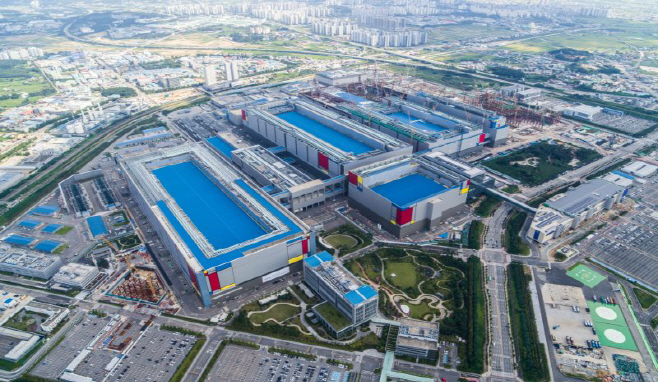Samsung Electronics has increased more than 5,000 employees in charge of semiconductors in the past year. This is because they need manpower to support the creation of the semiconductor ecosystem, which is currently being organized around the Pyeongtaek plant. In particular, it is known that about 6,000 more workers will be needed just for the expansion of the Pyeongtaek campus, and it is predicted that the search and securing of talent will be further accelerated.

According to Samsung Electronics’ semiannual report on the 20th, the number of employees in the DS division stood at 73,544 as of the end of June, an increase of 5,423 from the previous year. During the same period, the total number of employees increased by 6,166, of which 87% are semiconductor personnel.
The share of semiconductors in Samsung Electronics’ total workforce is also increasing every quarter. As of the second quarter of this year, out of 124,070 employees, the DS division accounted for 59.2%, a 9%p (point) increase from 2018 (50%).
The reason why Samsung Electronics is significantly increasing its workforce is that expansion is underway centering on its Pyeongtaek plant. Samsung Electronics, which is currently running three lines in the Pyeongtaek campus, plans to build three more factories by 2030. It is reported that the Pyeongtaek 4th plant line construction is underway with the goal of starting operation in October next year, and the 5th plant, which is about to start construction, has also started groundwork such as grounding.
Known as the size of 25 soccer fields, Pyeongtaek Line 3 is approximately 1.7 times larger than the existing 2 lines. Since EUV (Extreme Ultraviolet Rays)-based DRAM and EUV foundry production, which are emerging as the next-generation processes in the memory market, are mainly produced here, manpower who can respond to market demand in a timely manner is needed.
In addition to this, Samsung Electronics also has a plan to increase the number of clean rooms (sterile clean spaces) on the Pyeongtaek Campus from 12 to 18. It is expected that about 6,000 additional workers will be needed in the future. An official from the semiconductor industry explained, “Approximately 1,000 manpower is required for each semiconductor clean room.”
Earlier, in July of last year, a large number of employees were hired in line with the operation of the 3rd line of the semiconductor plant located in Pyeongtaek, Gyeonggi-do. The number of employees hired over the past two years from 2021 far exceeds 10,000.
Manpower expansion is also linked to technological competitiveness.
In fact, Taiwan’s TSMC, the world’s No. 1 foundry (semiconductor consignment production) company, was scheduled to operate a foundry plant in Arizona, USA from next year, but there is no manpower to infuse the new plant right away, so the plan is delayed to 2025.
In addition to immediate hiring, Samsung Electronics plans to steadily increase semiconductor talent from the training stage. A typical example is establishing a semiconductor department in connection with a domestic university. For students in the department, Gyeonggi-hyeon, the head of the semiconductor division of Samsung Electronics, and the DS division president and executives visit the school and give a lecture.
An industry insider said, “Although the memory division continues to be sluggish due to the recent market downturn, Samsung Electronics’ core cash cow (cash-generating source) is the semiconductor business.” “We need to broaden our scope of investment,” he said.
